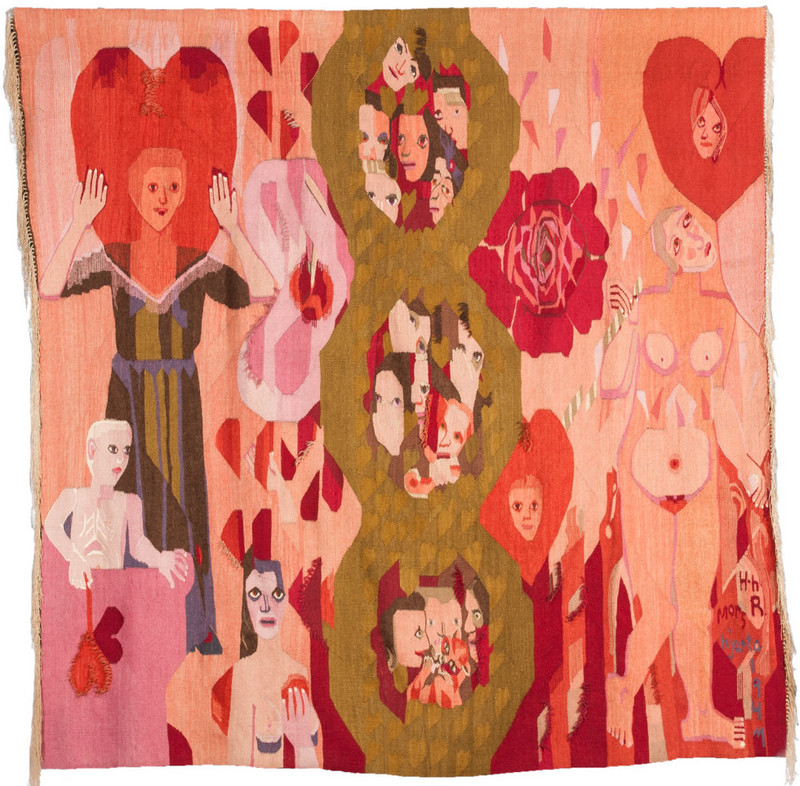Hannah Ryggen
31 Oct 2015 - 06 Mar 2016

Hannah Ryggen
Mother's Heart, 1947 Nordenfjeldske Kunstindustrimuseum, Trondheim © Hannah Ryggen/ Bildupphovsrätt 2015
Mother's Heart, 1947 Nordenfjeldske Kunstindustrimuseum, Trondheim © Hannah Ryggen/ Bildupphovsrätt 2015
HANNAH RYGGEN
Weaving the World
31 October 2015 – 6 March 2016
Curator: Julia Björnberg
Hannah Ryggen (1894-1970) was one of the most important artists of the twentieth century. This exhibition is produced in collaboration with Norway’s National Museum of Art, Architecture and Design in Oslo, and responds to a renewed interest in Ryggen’s figurative and impassioned modernism.
Hannah Ryggen grew up in Malmö, where she studied painting and drawing at night while working as an elementary school teacher during the day. In the 1920s she abandoned painting and took up weaving. Ryggen’s socially conscious tapestries often responded directly to current events and conflicts around the world. She expressed strong opposition to fascism, Nazism, and other destructive forces. She used her work to discuss violence and oppression, but also life in the small Norwegian farming community of Ørland, where she lived most of her life. Ryggen regarded her former homeland from a distance, and was extremely critical of how Sweden claimed to be neutral during the Second World War while allowing German soldiers to use its railway to get to Norway.
Weaving the World
31 October 2015 – 6 March 2016
Curator: Julia Björnberg
Hannah Ryggen (1894-1970) was one of the most important artists of the twentieth century. This exhibition is produced in collaboration with Norway’s National Museum of Art, Architecture and Design in Oslo, and responds to a renewed interest in Ryggen’s figurative and impassioned modernism.
Hannah Ryggen grew up in Malmö, where she studied painting and drawing at night while working as an elementary school teacher during the day. In the 1920s she abandoned painting and took up weaving. Ryggen’s socially conscious tapestries often responded directly to current events and conflicts around the world. She expressed strong opposition to fascism, Nazism, and other destructive forces. She used her work to discuss violence and oppression, but also life in the small Norwegian farming community of Ørland, where she lived most of her life. Ryggen regarded her former homeland from a distance, and was extremely critical of how Sweden claimed to be neutral during the Second World War while allowing German soldiers to use its railway to get to Norway.
